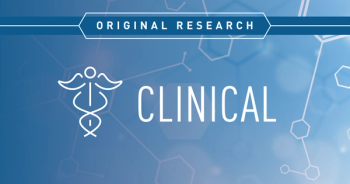
Balancing Autonomy and Support in Pediatric Diabetes: Marry Vuong, PharmD, BCPPS
From pump choices to TikTok trends, building trust with young patients means meeting them and their families where they are.
Caring for children with diabetes requires guiding a network of parents, school nurses, and adolescents through complex decisions, costly technologies, and life changes, says Marry Vuong, PharmD, BCPPS, chief of clinical operations, Perfecting Peds. By blending education, motivational interviewing, and even social media trends, pediatric pharmacists can find creative ways to keep young patients engaged, informed, and empowered in their own care.
This transcript was lightly edited; captions were auto-generated.
Transcript
What are some of the biggest barriers you encounter when implementing new diabetes technologies or therapies in pediatric settings?
When you work in the adult world, it's you and the patient, because the patient is the adult. They're in charge of their decisions. When you work in pediatrics, your relationship is not only with the patient, but it's also with the parent, the family, and the school nurse. It becomes super, super complicated because there are so many people who care for this child. Especially in diabetes care and early adoption of new technologies, it's education; it is teaching everyone, making sure everyone is on the same page.
But also, access is a big thing too, because we're very fortunate, but we don't realize how the norm for us, like sending an Amazon link, is so easy for me because I'm used to it. I literally order everything on Amazon. But for some other families, they can't afford it, so having costs as a barrier, especially because these technologies are very expensive, and then also just having puberty as another level of it. A lot of these kids want to be in charge of their care. They want to ask questions. They want to choose.
It's really cool. Some of the parents are like, "Oh yeah, my child chose this insulin pump because they liked that it's compatible with their iPhone instead of being compatible with Android." That's a big discussion. Why did you choose this one over the other? My child wanted tubing vs. no tubing. It's nice. It's actually pretty beautiful talking to a family and hearing that they gave their child the autonomy to choose which pump that they wanted.
But then the caveat with working with adolescents is that they're in charge, so their adherence and all of that is based on what they want to do. If they wake up late and they forget, or if they're just over it and they don't want to participate anymore, it becomes really hard, because it's their choice. Again, educating and motivating and finding ways to reward them, I think, is great. Motivational interviewing, which is something that we learned in school, has come in key, and also just getting down to their level and trying to think of things to present in a cool way.
I think the adolescents keep me relevant and cool. I do take pharmacy students, and they teach me all the trends. I try to hone in on the TikTok trends, or whatever is trending and whatever is viral at that point, to kind of meet in the middle with my adolescents so that they think I'm cool and, like, they would want to listen to me.
One of the fun things is my background is in nutrition. With a lot of diabetics, a lot of it is teaching them about snacks and teaching them about how to program the pump for exercise and for sleep and to prevent, like, lows overnight or during exercise. A lot of it is just like straight-up counseling, and they're just like, "Oh my gosh, I have to sit here and listen to her."
I try to make it relevant. One of the things, like, I try to talk about is the sleepy girl mocktail, or fiber through the viral tiramisu chia pudding, or things like that. I try to stay relevant with the time so that it's adaptable to them. Because, all in all, let's try to relate to you as much as possible so that you listen and you follow through, and you think I'm cool, so you'll tell me if you're doing something bad on the side, and we can find a way to correct it.
Newsletter
Stay ahead of policy, cost, and value—subscribe to AJMC for expert insights at the intersection of clinical care and health economics.







































